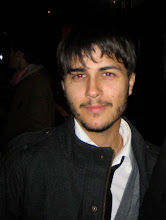My professor at Pratt sent out an email conversation that happened between Paul Mankiewicz's who teaches the water quality class at Pratt. She wanted to share this email conversation because it embodies our whole systems approach....Below you will see a proposal for handling the raw sewage that flows untreated into NYC's surrounding water bodies during wet weather events due to our combined sewer system.
Cheers,
Tyler
"Dear Harbor Ecology Friends,
I would be grateful if you'd join me in exploring the possibility of using ultraviolet light emitting diodes to disinfect combined sewage overflows at the waterfront. It might be worthwhile to partner with the LED industry and a local university to create a test site. Would you be willing to meet to explore this possibility?
I first proposed this idea to the Mayor's Office for Sustainability and Long-term Planning and some years ago, and the technologies involved (UV LEDs and on-site generation using solar panels and wind turbines) have advanced significantly in even that short period of time. With outlets designed to generate turbulence (to assure changeover in exposed waters, to overcome the high turbidity that prevents UV penetration), UV LEDs could eliminate all or much of the bacterial load of CSOs before estuary contact.
Our current sewage treatment system uses mercury arc lights to bombard water with UV and EUV rays. Arc lights are cheaper than LEDs, but the price of LEDs lowers annually (as do photovoltaic panel prices). Tighter wavelength LEDs like UV cost more than those producing long wavelengths, like red. They are being adopted, however, by sewage plant designers in Southeast Asia, among other places: http://www.aseanenvironment.info/Abstract/41013577.pdf
When UV LED prices lower sufficiently, distributed disinfection at individual CSOs will become viable. That should be within the coming decade.
Why at the CSO rather than upstream? Because they are easy to access and have less water flowing through them than large tubes, making it easier for UV light to penetrate through the flow, and lower water volumes are easier to make turbulent. This also allows us to target sites mostly likely to damage habitat and human health -- we might start with one of what I dubbed the "Nasty Nine" worst CSOs.
LEDs are tough -- they require little maintenance. Solar panels and wind turbines allow for off-grid work on the waterfront, though many CSOs are quite near electric street lamps, allowing for an easy line extension.
I believe that with this system installed, NYC could free its harbor of much of its bacterial problem without expensive infrastructure additions or added chemical disinfection. Wildlife and stray animal eyesight, if that's found to be put at risk by the equipment, could be guaranteed by motion-sensor shutoffs and deterrents.
I've been invited to join the Manhattan Chamber of Commerce's technology committee and I'd be happy to ask colleagues for support in this endeavor. Local universities might also be ideal partners.
This LED UV solution to CSOs isn't complete, however. We need a serious requirement to install bioswales (http://en.wikipedia.org/wiki/Bioswale), green roofs, and permeable surfaces, and to plant even more trees. Only those measures will reduce the runoffs, which carry chemical pollutants that can't be addressed by UV LEDs (though the good news is that the worst of this problem is swept along with the first ten minutes of rain, which is typically caught by the system before CSOs are opened)."
PAUL's RESPONSE......
"..It would be nice if some super technology would come along to solve the combined sewer problem, but am afraid we already know how to do this:
Solid state light production is neat indeed, but how to get all that water in contact with light sources is not simple to do.
Discharge less (or no) water from the land;
enhance natural filters in the water.
The City is putting at least a billion dollars, maybe two billion, into producing ultraviolet light to kill microbes in Croton water.
Water has to be clear and clean enough not to absorb the UV before it hits the microbe, and, even though UV does work OK for Cryptosporidium, it is not effective on many bacteria..."
Humic matter is absorbs UV, as does suspended solids.
better, perhaps, to put in a filter that costs little (less than 100K for aquaculture media for enough mussels to filter 2 billion gpd)
and connects with the food chain and food web that sustains much of the life in the Hudson and Atlantic


paul
Paul S. Mankiewicz, Ph.D.
Executive Director
The Gaia Institute
440 City Island Avenue
Bronx, NY 10464
718 885-1906 office
paul@thegaiainstitute.org
www.thegaiainstitute.org
New York City Soil & Water Conservation District
121 Avenue of the Americas
New York, NY 10013
www.nycswcd.net

No comments:
Post a Comment